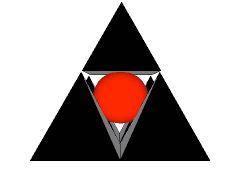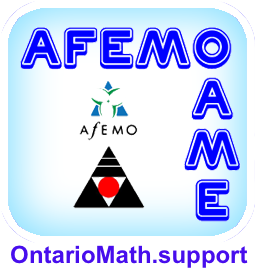President's Message - December 2021
The Beauty of Mathematics

JUDY MENDAGLIO
judy.mendaglio@oame.on.ca
I read with interest a little golden nugget that appeared in the September issue of the OAME/AOEM Gazette.
This brought to my mind one of my greatest sorrows about how students experience mathematics. We teachers seem to really want to give students quick rules, seemingly to reduce the pain of thinking mathematically. However, for me, the attraction of mathematics has always been the beauty of its underlying structure. Quick rules circumnavigate the explorations of these beautiful structures that I hold so dear.
How would I answer this wonderful question? I visualize these sorts of "greater than" and "less than" questions as geometric relationships between numbers. In the same way that "he's my brother-in-law" tells us about a relationship between people, it isn't clear what other relationships are connected to this one. Is the brother-in-law married to my sister? Is he my husband's brother? Telling us that -x > -5 informs us that -x and -5 have a relationship, specifically, that -x lies to the right of -5 on the number line (the geometry). Could we be looking to understand that relationship in a different way, perhaps looking for the underlying relationship that created this relationship, in the same way that we looked for the underlying relationship that created the brother-in-law relationship? Of course we can.
Upon reflection, we understand that multiplying by negative 1 is related geometrically to the reflection transformation. For example, when we reflect this triangle through/across that y-axis (horizontally), we find that we have had to multiply the x-coordinate of each vertex by -1, to determine the vertices of the reflected triangle. We notice that if a vertex was on the left of another, it is now on the right. The "less than" relationship is now a "greater than" relationship. If we reflect the triangle across/through the x-axis (vertically), the same thing happens, but this time the effect is as if we had multiplied the y-coordinates of the vertices by -1.
Taking this two-dimensional relationship between reflection and multiplying by -1 and applying it to the one- dimensional -x > -5 question, we see this related relationship between x and 5.
In this way, we can see that the relationship that is created through multiplication by -1, which in this case means geometrically reflecting through zero (horizontally), is x < 5. Interestingly, if we horizontally reflect the symbol >, we get <. This is why mathematics is so beautiful.
Previous Message:
A new school year is beginning
Next Message:
50 Years of OAME!


















 Like us on FaceBook
Like us on FaceBook